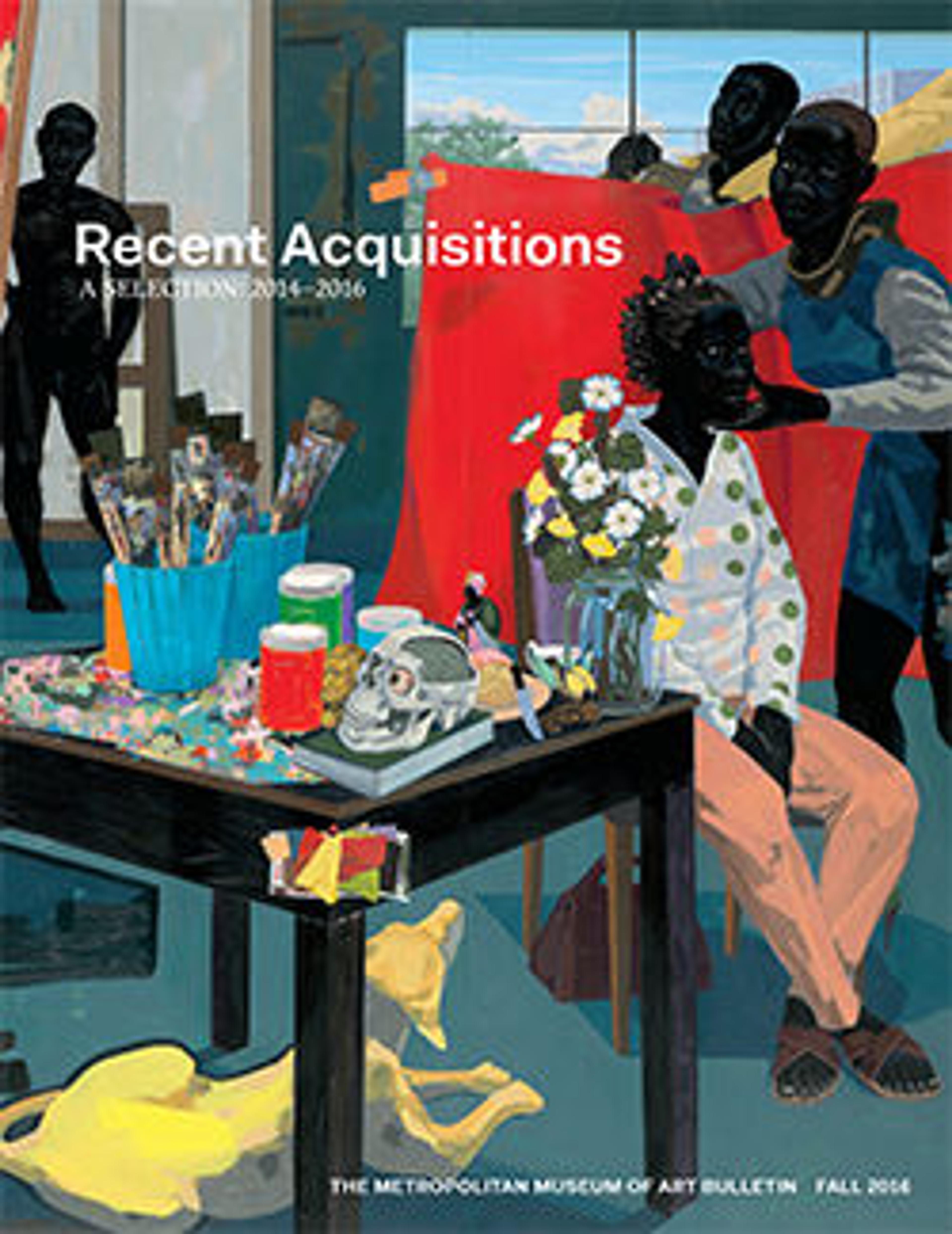Squash Window with Pebbles
Louis Comfort Tiffany (1848–1933) was one of the most celebrated artists at the turn of the twentieth century. Throughout a career that spanned the 1870s through the 1920s, his work included painting and almost every decorative art medium. His travels abroad encouraged his interest in art from the Near and Far East, which informed his decorative work alongside those inspired by nature. Simultaneously, he embodied modernity, affording him wide-ranging acclaim.
Tiffany is well known for his leaded-glass windows. This extraordinary window dates from the earliest and most inventive period of Tiffany’s career. The window’s abstracted vegetal blossom in the central panel, the agitated vines of glass, the experimental "confetti" glass, and the borders of found translucent beach pebbles, all contribute to the inventiveness of this work. It is highly experimental and avant-garde, yet presents a sophisticated aesthetic. The window is also a tour-de-force of the glazier’s art. The ability to affix large pebbles into a window using lead came, the traditional lead strips utilized by stained-glass workers to assemble glass pieces together, was highly complex and required great skill. The came has been used in undulating and scrolled patterns associated with the Art Nouveau style.
The presence of gilding on the lead came suggests that the window was designed to be seen with both transmitted and reflected light. The central panel in reflected light transforms to an even more abstracted scene in shades of white and blue and appears to be a jelly fish, a motif favored by avant garde turn-of-the-century artists, with the "vines" forming the tentacles of the jelly fish. The presence of two original metal rings at the top of the panel and the irregular frame indicate that the window was never intended to be permanently installed, but rather to be hung from chains in front of a window.
Tiffany is well known for his leaded-glass windows. This extraordinary window dates from the earliest and most inventive period of Tiffany’s career. The window’s abstracted vegetal blossom in the central panel, the agitated vines of glass, the experimental "confetti" glass, and the borders of found translucent beach pebbles, all contribute to the inventiveness of this work. It is highly experimental and avant-garde, yet presents a sophisticated aesthetic. The window is also a tour-de-force of the glazier’s art. The ability to affix large pebbles into a window using lead came, the traditional lead strips utilized by stained-glass workers to assemble glass pieces together, was highly complex and required great skill. The came has been used in undulating and scrolled patterns associated with the Art Nouveau style.
The presence of gilding on the lead came suggests that the window was designed to be seen with both transmitted and reflected light. The central panel in reflected light transforms to an even more abstracted scene in shades of white and blue and appears to be a jelly fish, a motif favored by avant garde turn-of-the-century artists, with the "vines" forming the tentacles of the jelly fish. The presence of two original metal rings at the top of the panel and the irregular frame indicate that the window was never intended to be permanently installed, but rather to be hung from chains in front of a window.
Artwork Details
- Title:Squash Window with Pebbles
- Artist:Louis C. Tiffany (American, New York 1848–1933 New York)
- Date:1885–90
- Geography:Made in New York, New York, United States
- Culture:American
- Medium:Glass, beach-worn quartz, lead came
- Dimensions:24 × 24 in. (61 × 61 cm)
- Credit Line:Purchase, Sansbury-Mills Fund and Anonymous Gift, 2015
- Object Number:2015.707
- Curatorial Department: The American Wing
More Artwork
Research Resources
The Met provides unparalleled resources for research and welcomes an international community of students and scholars. The Met's Open Access API is where creators and researchers can connect to the The Met collection. Open Access data and public domain images are available for unrestricted commercial and noncommercial use without permission or fee.
To request images under copyright and other restrictions, please use this Image Request form.
Feedback
We continue to research and examine historical and cultural context for objects in The Met collection. If you have comments or questions about this object record, please contact us using the form below. The Museum looks forward to receiving your comments.
